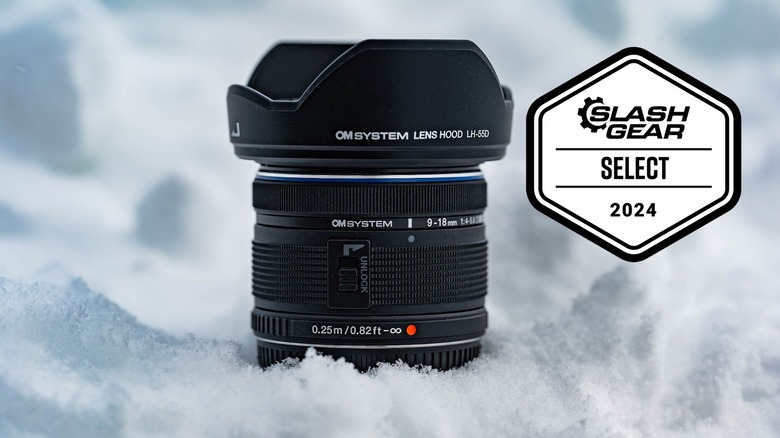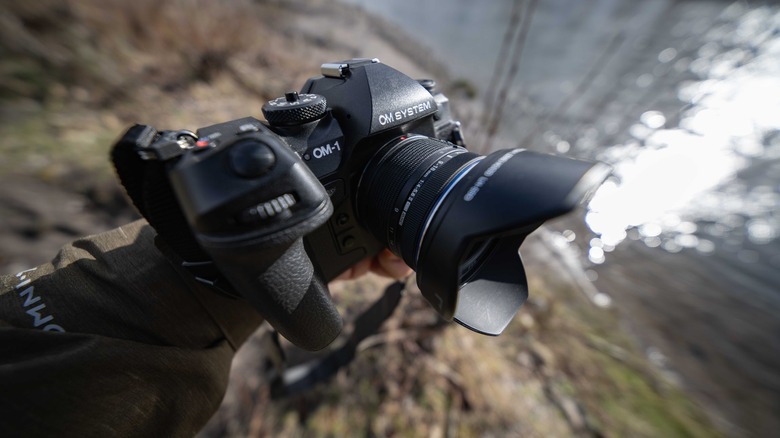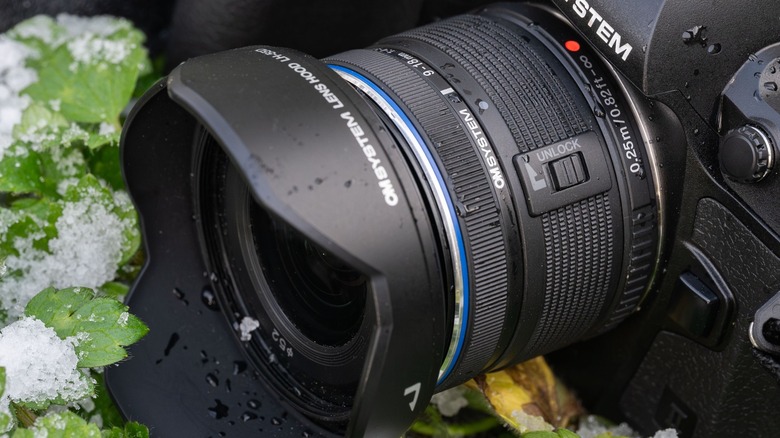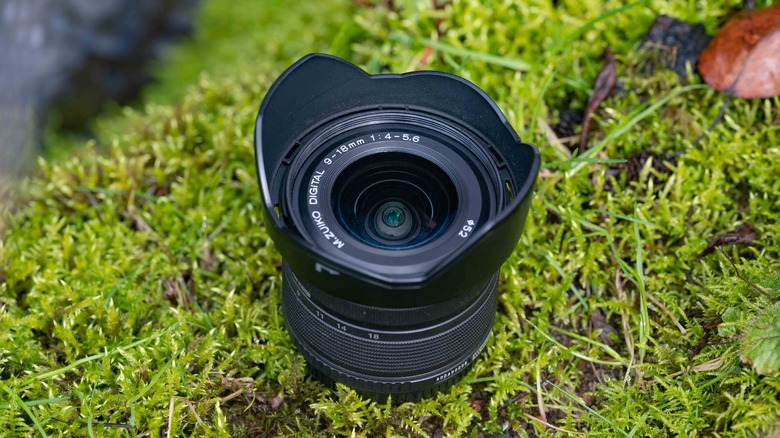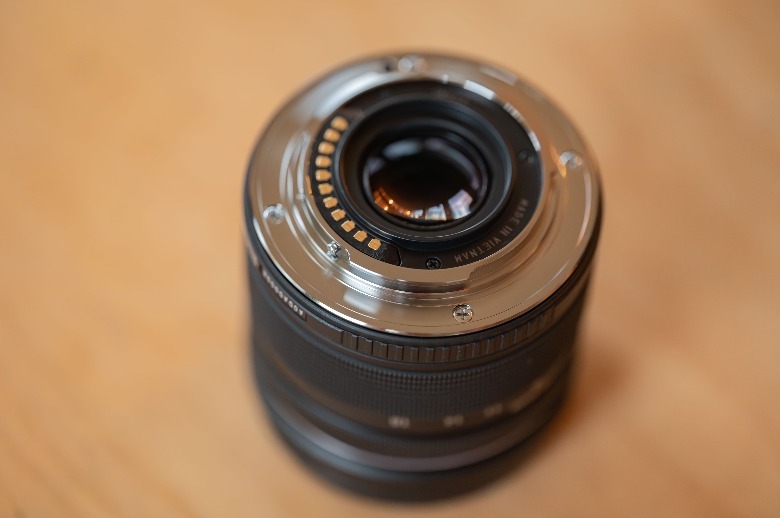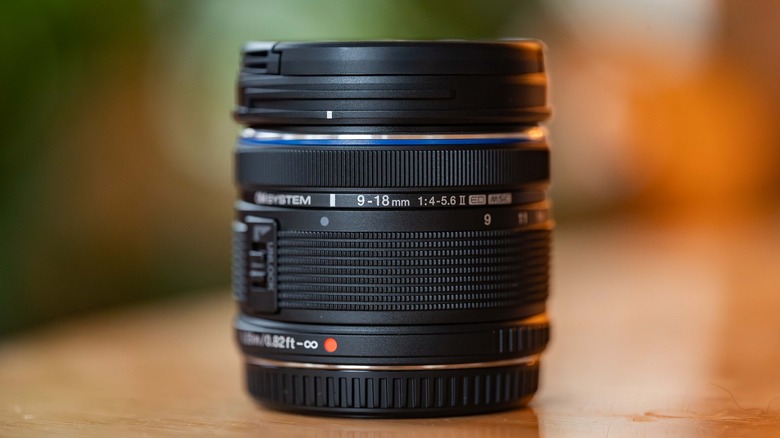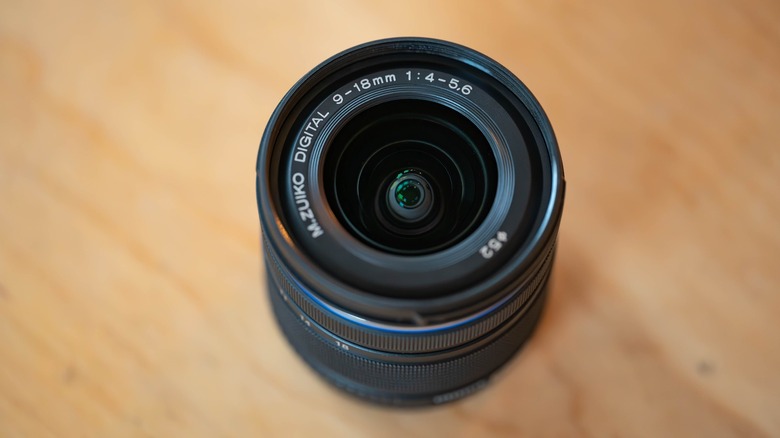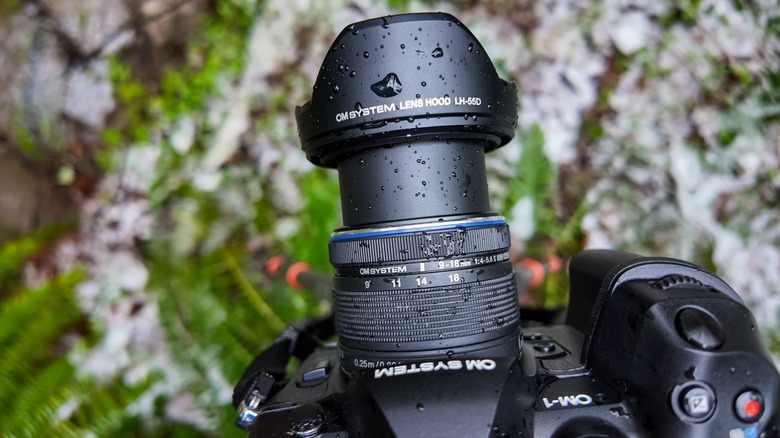OM System M.Zuiko Digital ED 9-18mm F4.0-5.6 II Review: A Miniature Lens With Big Potential
- Collapses to be extra compact
- Remarkably lightweight
- Great image quality
- Reasonably priced
- Not water resistant
- Relatively dark aperture
Launched alongside the OM-1 Mkii, the M.Zuiko Digital ED 9-18mm F4.0-5.6 ii seems like it might be the perfect lens to pair with that camera due to the small form factor of both camera and lens. As the "ii" at the end of its name implies, this is the mark 2 version of this lens, and to those who already shoot with the mark 1 version, the 9-18mm Mkii will certainly seem familiar despite its significantly refreshed appearance.
As this is a lens designed for micro four thirds cameras (M4/3), you need to take the size of a M4/3 sensor into consideration when considering its effective focal length. Since an M4/3 sensor is half the size of a full frame sensor, you simply double the focal length of an M4/3. This means that the 9-18mm Mkii is equivalent to an 18-36mm full frame lens, giving you an ultra-wide to moderately wide zoom range.
OM System provided a sample of the OM System M.Zuiko Digital ED 9-18mm F4.0-5.6 ii for this review.
Sharp as a tack
Given that the 9-18mm Mkii doesn't fall under OM System's pro line of lenses, I was pleasantly surprised by how well it performed optically. Throughout its focal range, there's no obvious distortion, and I never noticed any problems with color fringing. Even when shooting at F22 to maximize exposure time with Live ND filters enabled on the Om-1 Mkii, I was still able to achieve nice-looking images. It's a very sharp lens, even shot wide open, and there's no significant sign of vignetting in my images.
The downside is that the aperture is really rather dark and variable to boot, which in a lens with such a narrow focal range zoom isn't great. However, I shot in some fairly dim environments and still got some great photos, and for the subjects I found myself gravitating towards with this lens, F4.0-5.6 wasn't a problem. While it's difficult to get out-of-focus backgrounds with the 9-18 mm Mkii, that's not a problem if you're capturing waterfalls and landscapes, or documenting your travels on vacation. The sharpness and small size of the 9-18mm Mkii is what really counts.
The lens works great for video capture as well and offers a 0.2x maximum magnification for macro shooting. The included lens hood is highly effective, and I only experienced unwanted flares in one particularly challenging situation. In no other scenario did I experience ghosting or flaring.
Eminently portable
Above all else, the 9-18mm Mkii is compact, and it's to achieve this diminutive stature that a number of trade-offs were made, such as its variable aperture. Having such a portable lens to pair with the OM-1 Mkii made for an excellent experience when shooting with this lens and camera combo. Together the combined package is smaller than many point-and-shoot cameras I've tested over the years, making it easy to wear around on a strap around my neck without any discomfort.
The short minimum 49.3mm length of the lens is thanks to a mechanism similar to that of the Nikkor Z 24-70 F4 S. The 9-18mm Mkii must be twisted to 9mm initially to enable the camera to take pictures with it, whereupon it locks into the usable focal range of the lens. To fold it back down again, you need to hold down the corresponding switch on the side of the camera. It takes a bit of getting used to, but eventually, I came to appreciate the reduction in length it afforded me.
Despite its petite size and its weight of a mere 155 grams, the 9-18mm Mkii has the feel of a solid, high-quality optic. The materials used in its construction all feel quite premium, and the lens has a really attractive look to it. It pairs very nicely with the aesthetic of OM System cameras.
Fast AF, but stabilization is up to the body
There was no problem achieving fast and accurate focus when shooting with the 9-18mm Mkii on the OM-1 Mkii. Subject detection worked great, and the autofocus motor is pretty much silent. It was effective both when shooting still photos and video. There's no physical switch for swapping between auto and manual focus. The only controls on the lens itself are the lock switch and the zoom/manual focus rings. The manual focus ring is decent, as is the zoom control.
Keep in mind that the 9-18mm Mkii has no extra stabilization in the lens, so you'll have to rely on stabilization in the camera body, though that's no issue with the OM-1 Mkii considering the excellent IBIS in that camera. I actually performed a side-by-side test with the GoPro Hero 12 Black, and while the GoPro won that contest, the OM-1 Mkii with the 9-18mm Mkii came as close as any interchangeable lens camera I've ever used.
Unfortunate lack of waterproofing
The one big downside to the M.Zuiko 9-18mm Mkii is that, unlike so many OM System cameras and lenses, it isn't waterproof. This is something I only actually realized when checking information about the lens while writing this review after several weeks of testing in generally damp and rainy conditions.
The good news is that despite using the 9-18mm Mkii in the mist, rain, and spray from waterfalls it suffered no ill effects. With that said, I would certainly not recommend this lens for such circumstances. This is a pity, as one of the best things about the OM System OM-1 Mkii is how well weather-sealed and rugged it is. This means that while the 9-18mm Mkii is an ideal lens for travel, it might not be so good for outdoor adventures in wet or dusty weather. Though as I found, it's hardly a delicate flower either.
Appealing alternatives
If you don't mind a larger, heavier lens, you may well be tempted by one of the other lenses OM System offers, as there are several great options with similar focal ranges that offer distinct advantages over the 9-18mm Mkii. The M.Zuiko Digital ED 8-25mm F4.0 PRO for example features a more significant zoom range on both the wide angle and telephoto ends of the spectrum. It's also water-resistant and has a fixed aperture. However, it is quite large and heavy.
Similarly, the M.Zuiko Digital ED 7-14mm F2.8 PRO is a larger, heavier lens than the 9-18mm Mkii, and it doesn't offer as much reach on the long end, but it does have a very bright f2.8 constant aperture and is wider than the 9-18mm Mkii, and like the 8-25mm lens the 7-14mm is water resistant. You might also consider a wide-angle prime lens such as the M.Zuiko Digital 17mm F1.8, which is very bright, as well as being even smaller than the 9-18mm Mkii. However, it's also not water resistant, so keep that in mind.
Price and availability
The OM System M.Zuiko Digital ED 9-18mm F4.0-5.6 II is expected to begin shipping at the end of March 2024 for an MSRP of $699.99. That's really quite reasonable, taking into consideration the portability of the lens paired with its excellent image quality. The premium materials of its construction lend further credence to its price point.
However, it's worth noting that the lenses discussed above as alternative options are more competitive in terms of price than you might think. At time of writing the M.Zuiko Digital ED 8-25mm F4.0 PRO is on sale for $899.99, which is very appealing indeed (it's normally $1099.99). The M.Zuiko Digital ED 7-14mm F2.8 PRO is significantly pricier at $1399.99, so the 9-18mm Mkii makes a lot of sense for those on a limited budget in comparison to it. Of course, if you'd rather get a prime lens, the M.Zuiko Digital 17mm F1.8 is only $399.99 right now, and even its normal price of $499,99 seems like quite a bargain.
With all that said, for what it is, $699.99 seems like the right price point for the 9-18mm Mkii.
Conclusion
Despite the lack of waterproofing, the OM System M.Zuiko Digital ED 9-18mm F4.0-5.6 II managed to deliver an extremely satisfying photography experience. The focal range is highly useful for the landscape photography scenarios in which I put it to use, and there's a real joy to shooting with a camera and lens that weigh as little as the 9-18mm Mkii and OM-1 Mkii. It's a setup that doesn't hold you back, and which I felt comfortable taking with me on trips where I'd normally leave cameras other than my phone at home. It doesn't call attention to itself, so you can use it in scenarios where a larger lens might be noticed and disapproved of.
It's hard to imagine a better lens for travel. It will take up no space at all in your luggage — it's so small I was able to carry it around in a pocket when I was shooting with a different lens. Its focal range is versatile, the images it produces are razor sharp, and it's an easy lens to recommend for anyone looking for any Olympus photographer looking for the smallest wide-angle zoom possible.
The OM System M.Zuiko Digital ED 9-18mm F4.0-5.6 II can be preordered from OM System's online store for $699.99.
